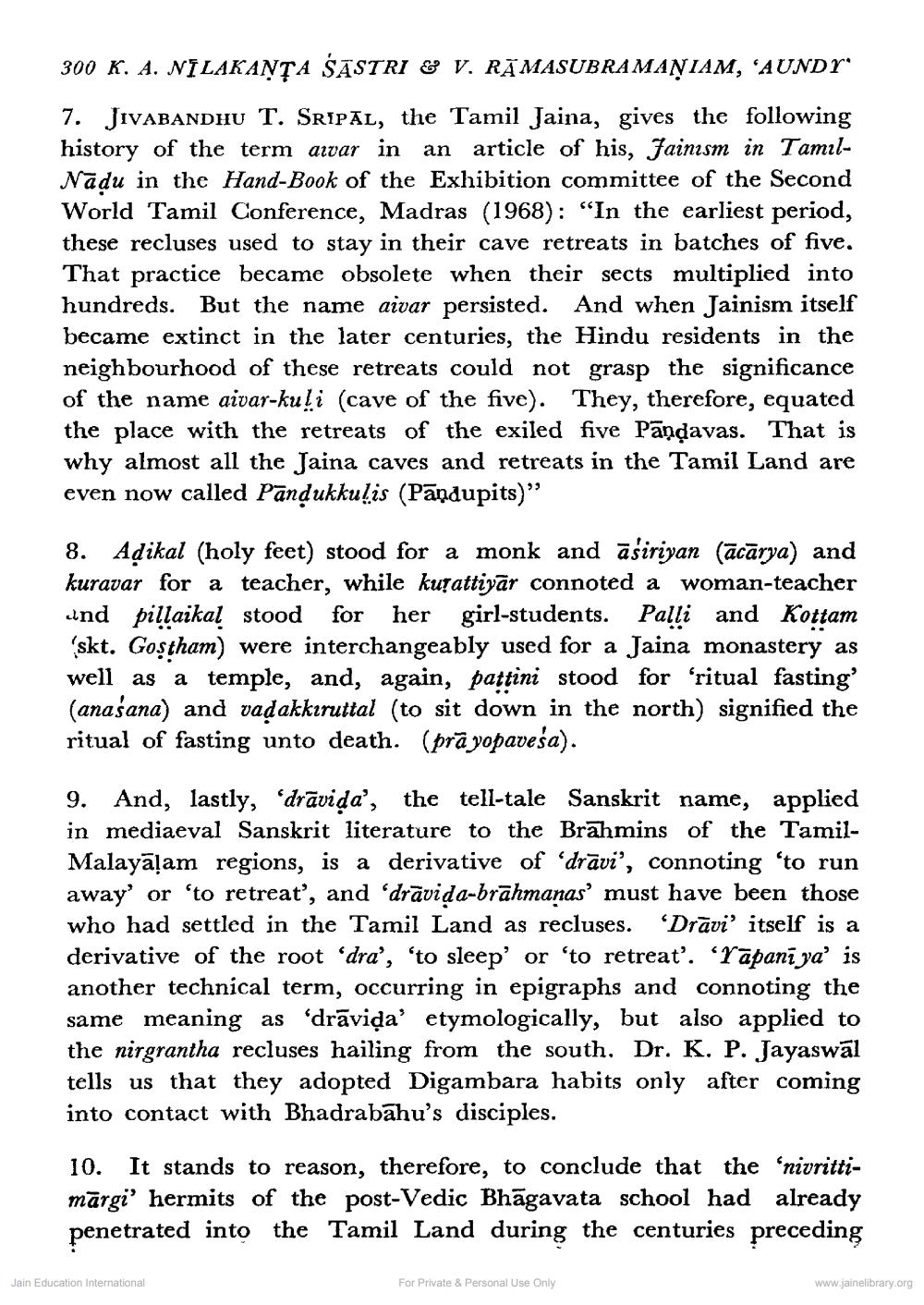________________
300 K. A. NILAKANȚA SASTRI & V. RĀMASUBRAMAŅIAM, 'AUNDY
7. JIVABANDHU T. SRIPAL, the Tamil Jaina, gives the following history of the term arvar in an article of his, Jainism in TamilNādu in the Hand-Book of the Exhibition committee of the Second World Tamil Conference, Madras (1968): “In the earliest period, these recluses used to stay in their cave retreats in batches of five. That practice became obsolete when their sects multiplied into hundreds. But the name aivar persisted. And when Jainism itself became extinct in the later centuries, the Hindu residents in the neighbourhood of these retreats could not grasp the significance of the name aivar-kuli (cave of the five). They, therefore, equated the place with the retreats of the exiled five Pandavas. That is why almost all the Jaina caves and retreats in the Tamil Land are even now called Pandukkulis (Pāņdupits)"
8. Adikal (holy feet) stood for a monk and āśiriyan (ācārya) and kuravar for a teacher, while kufattiyār connoted a woman-teacher and pillaikal stood for her girl-students. Palli and Kottam
skt. Gostham) were interchangeably used for a Jaina monastery as well as a temple, and, again, pattini stood for 'ritual fasting' (anaśana) and vadakkıruttal (to sit down in the north) signified the ritual of fasting unto death. (prāyopaveśa).
9. And, lastly, 'drāvida', the tell-tale Sanskrit name, applied in mediaeval Sanskrit literature to the Brāhmins of the TamilMalayāļam regions, is a derivative of 'drāvi', connoting 'to run away' or 'to retreat, and 'drāvida-brāhmanas' must have been those who had settled in the Tamil Land as recluses. 'Drāvi' itself is a derivative of the root 'dra', 'to sleep' or 'to retreat'. 'Tapani ya' is another technical term, occurring in epigraphs and connoting the same meaning as 'drāvida' etymologically, but also applied to the nirgrantha recluses hailing from the south. Dr. K. P. Jayaswal tells us that they adopted Digambara habits only after coming into contact with Bhadrabahu's disciples.
10. It stands to reason, therefore, to conclude that the ‘nivrittimārgi' hermits of the post-Vedic Bhāgavata school had already penetrated into the Tamil Land during the centuries preceding
Jain Education International
For Private & Personal Use Only
www.jainelibrary.org




